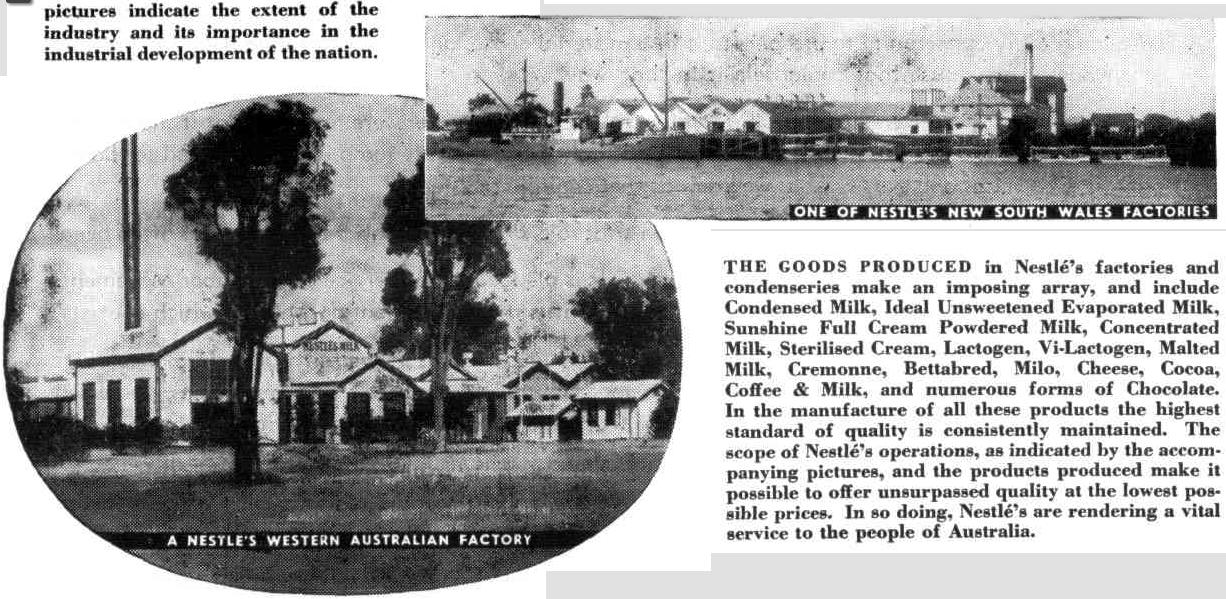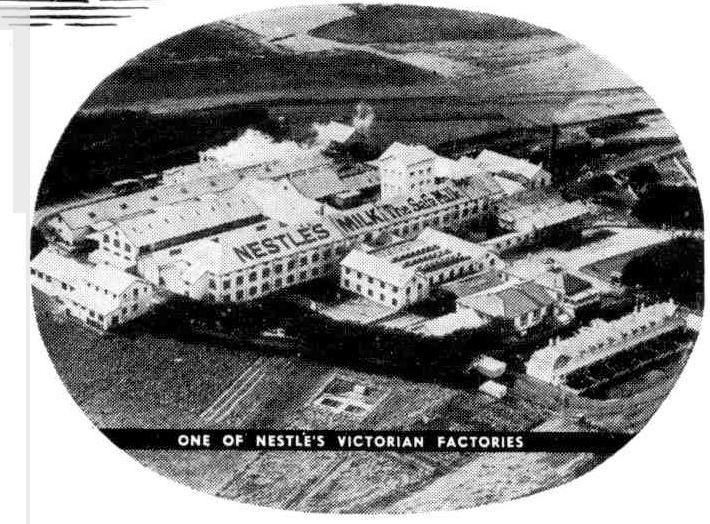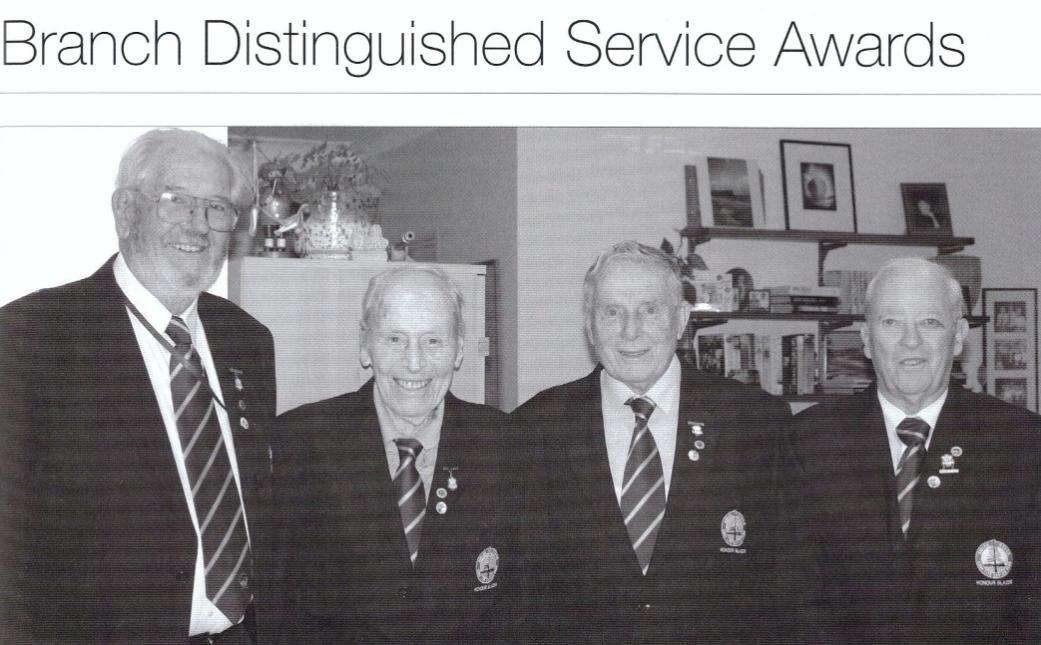February 20 - 26, 2022: Issue 527
Perfect Send Off For Two ABSLSC Club Legends - Life Members Reg Wood And Don "Imo" Imison
Despite challenging conditions from 2 plus metre continuous swells from Tropical Cyclone Dovi, choppy dangerous surf breaking on shallow sandbanks, strong South Easterly wind, and seaweed in the water, Reg Wood's and brother in law Don Imison's ashes were scattered out the back at Avalon Beach in accordance with their wishes and SLSA tradition on Saturday, February 12th 2022.
Reg and Don both passed away aged 94 early last year. Covid, Covid restrictions on travel and restrictions on the Club and individuals in the intervening period had meant that this was the first opportunity that it was possible for the two family groups and Club members to gather at the Club where the two boys had spent so many happy times in their lives.
Family members and Surf Club members travelled from as far north as Ballina, to Bega on the South Coast and points in between to pay their respects and celebrate the two veteran lifesavers Don and Reg.
Jeff Imison, Don's son, Reg's son, and Warren Young OAM told various stories about the boys' lives and adventures at the surf club.
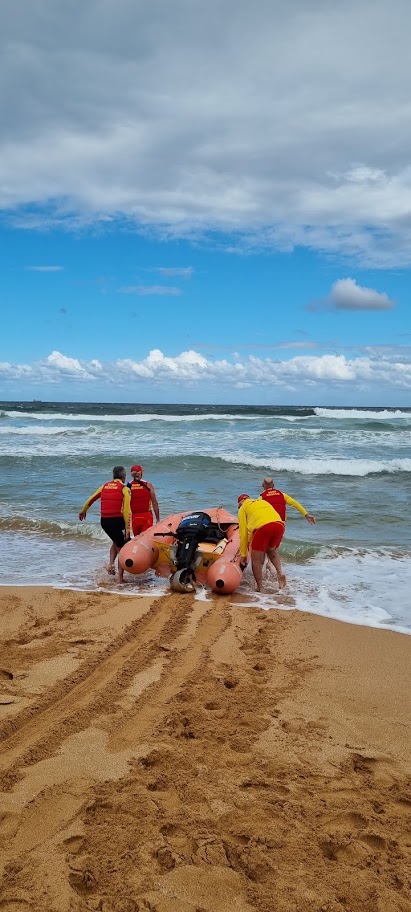
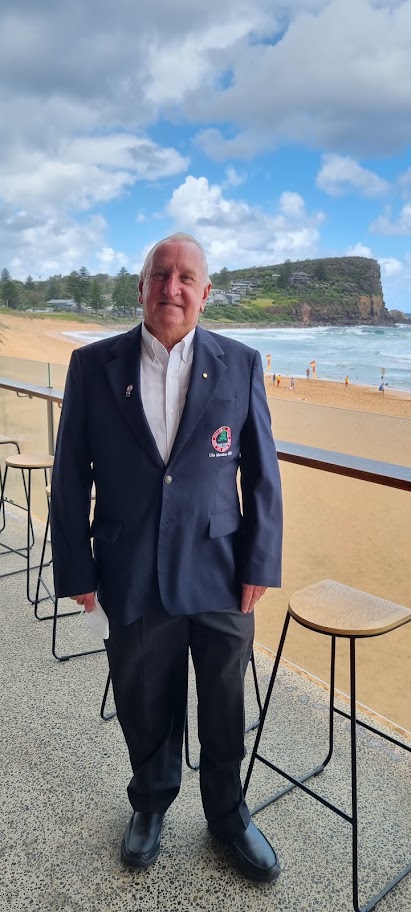
Warren noted that they had both competed in the 1956 surf carnival when one of the first significant displays of Malibu surfboards in Australia took place, as commemorated on a plaque outside the surf club.
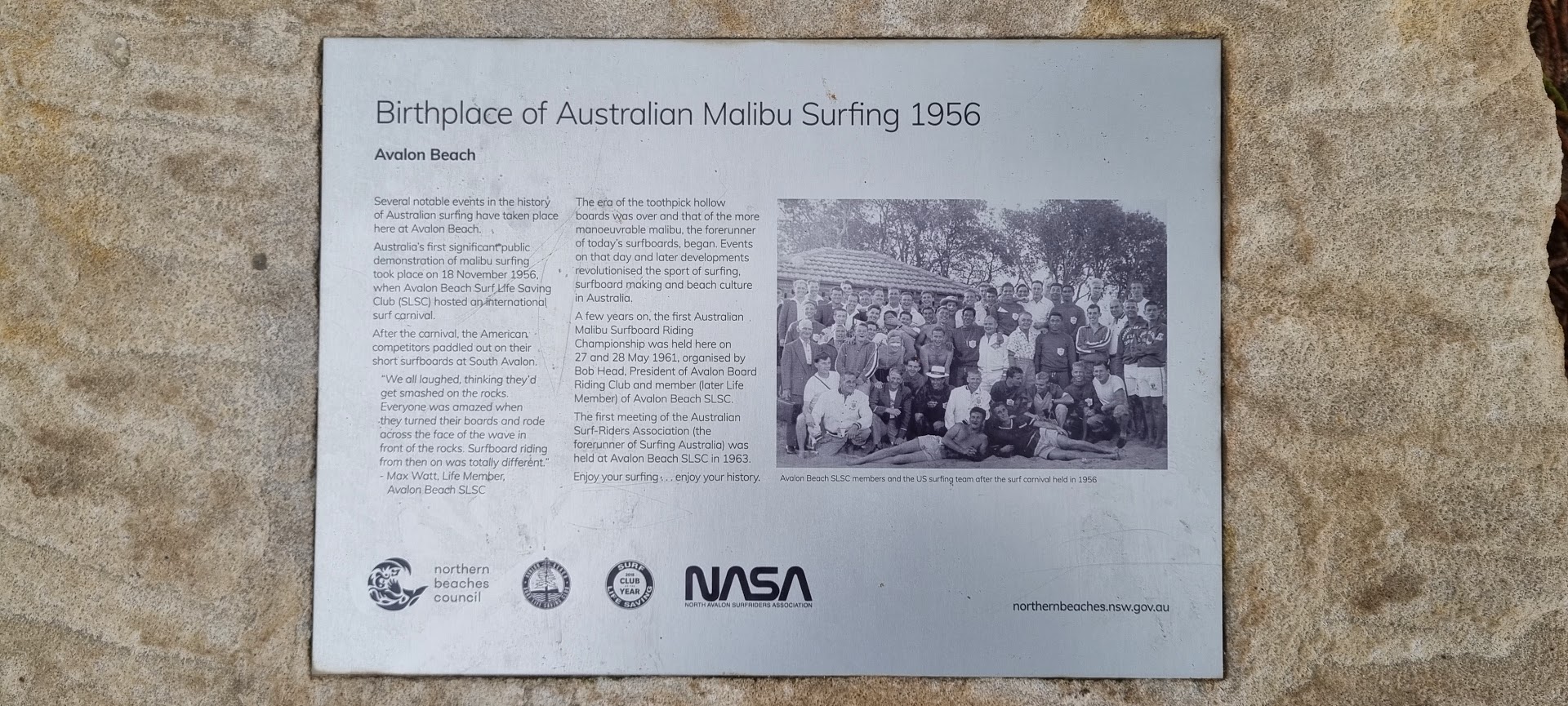
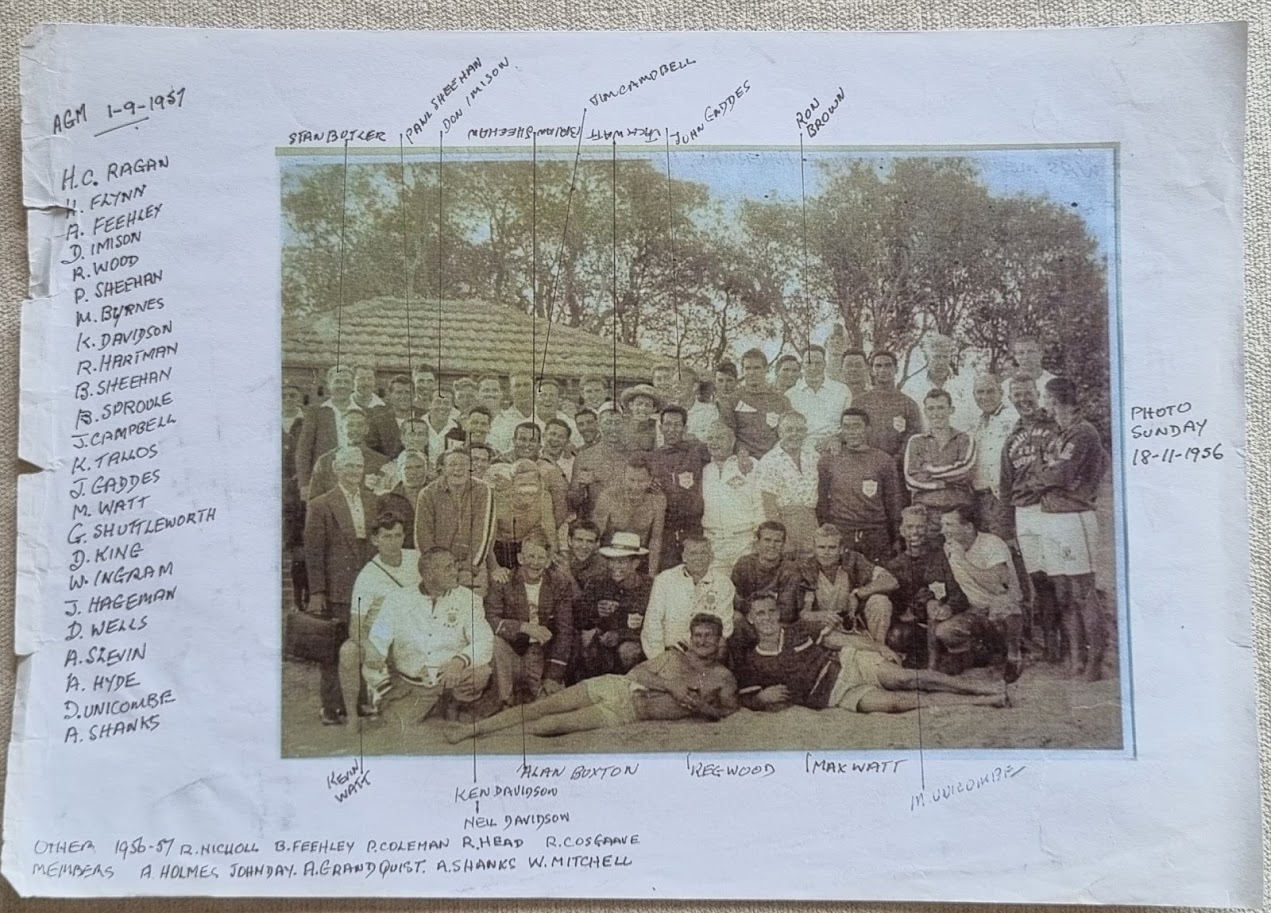
(names thanks to Norma Watt)
Warren said it was fitting that the two boys would now be together in the surf at Avalon Beach.
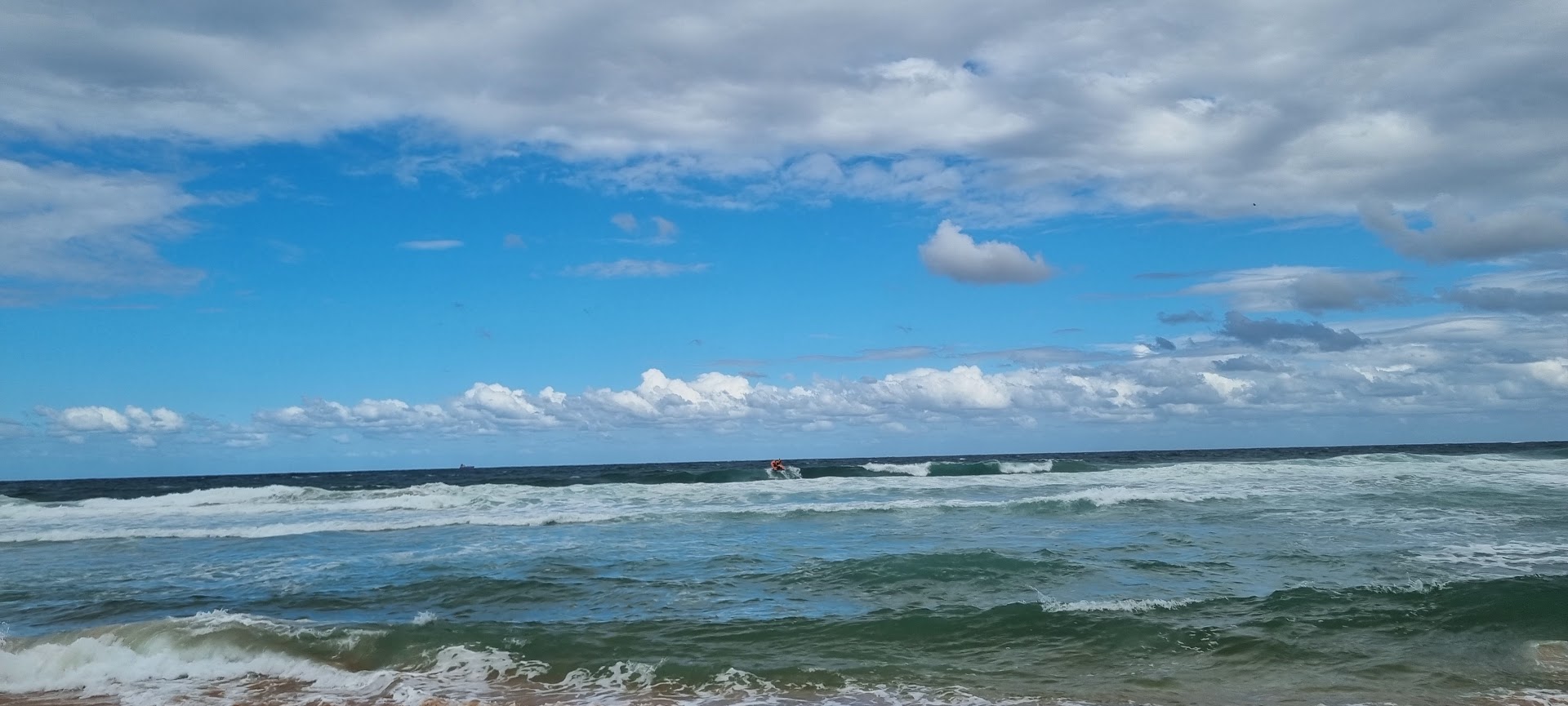
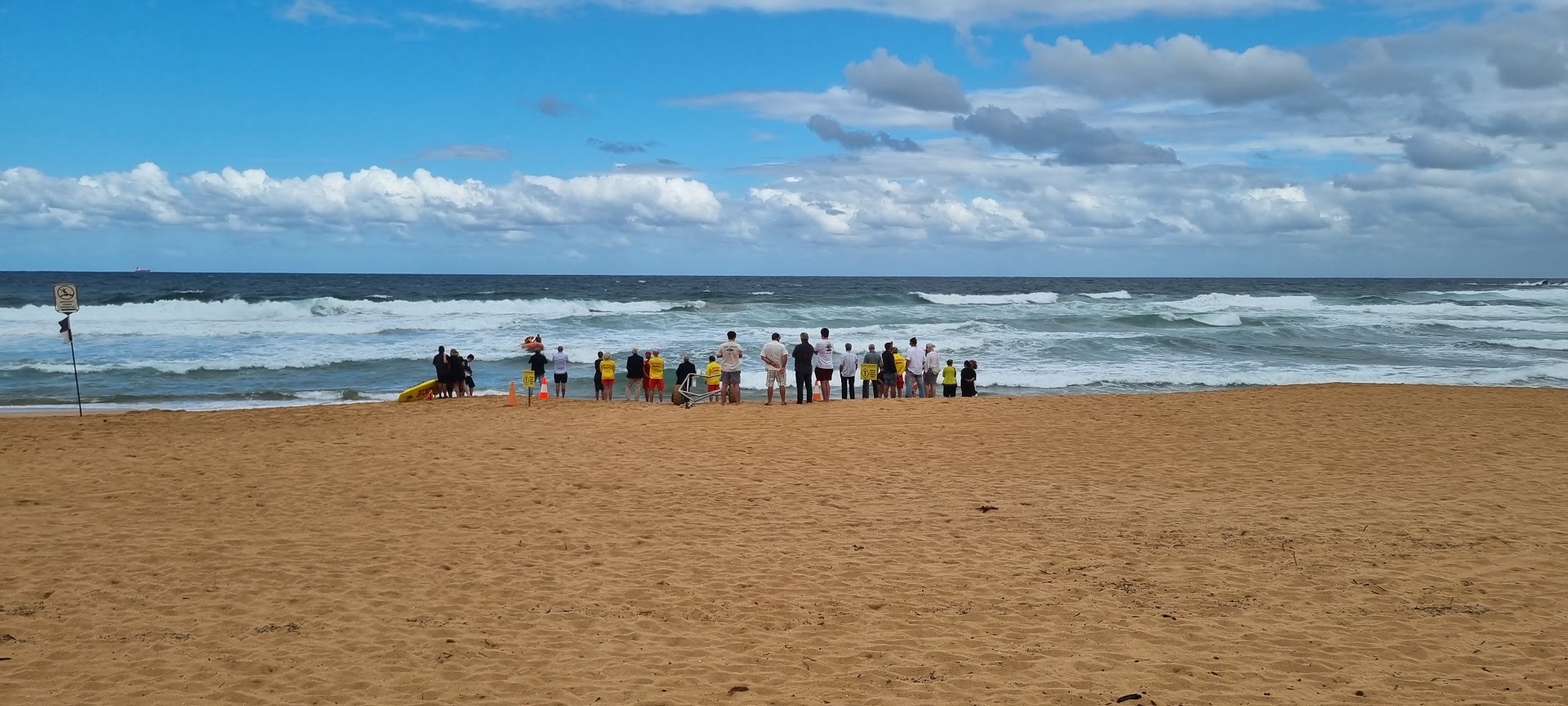
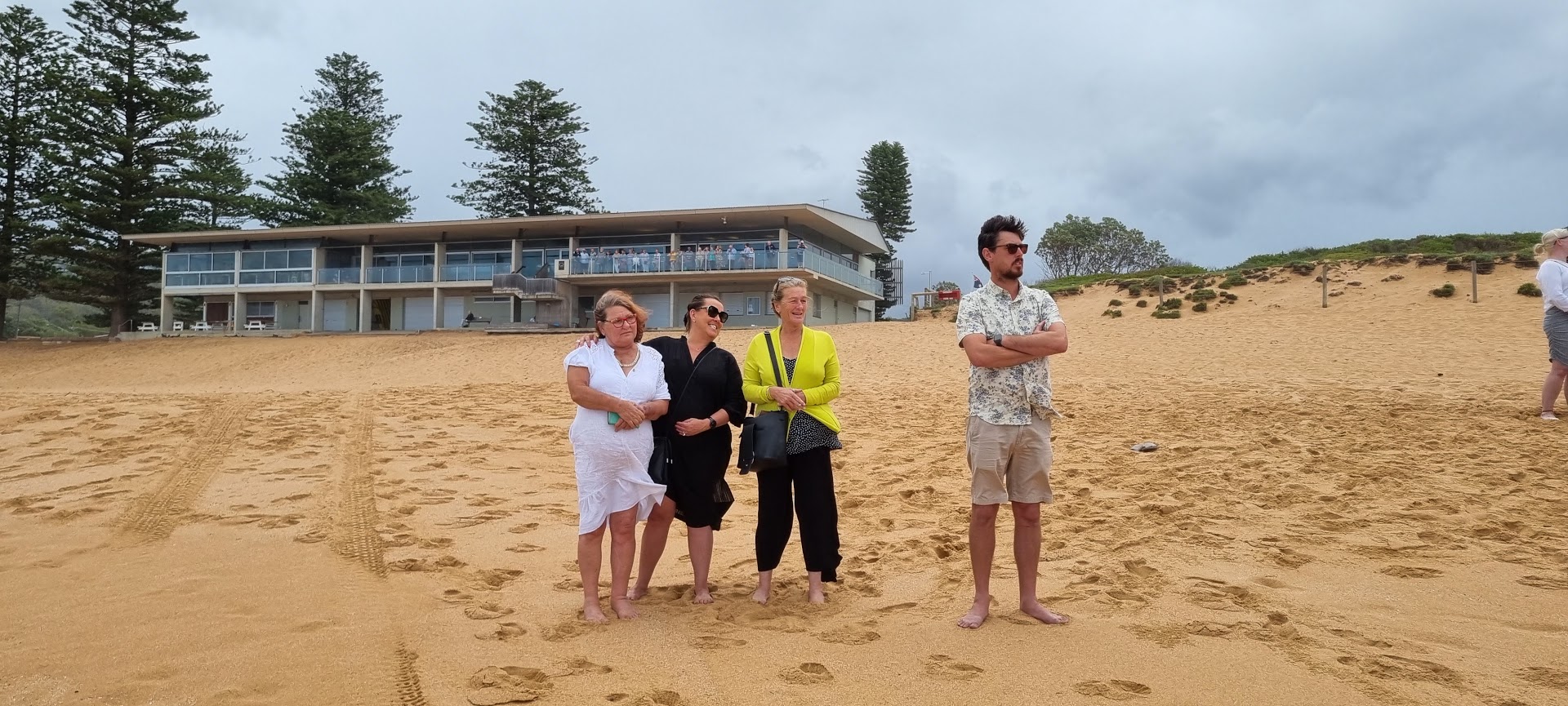
Alan Moran (Driver and IRB Captain) and Ashley Brown (Crew and Club Treasurer) drove the IRB straight out from the beach through 8 or 9 lines of non stop swells, in a display of great skill and surf knowledge.
Pictures: Al Moran with Kathy Reg's daughter and Leanne Austin (Club Administrator) and Ash Brown with patrol IRB Driver Nick Wood.
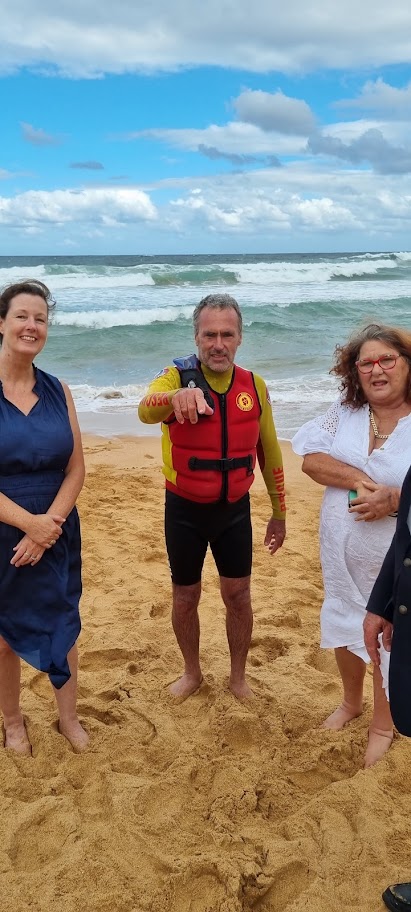
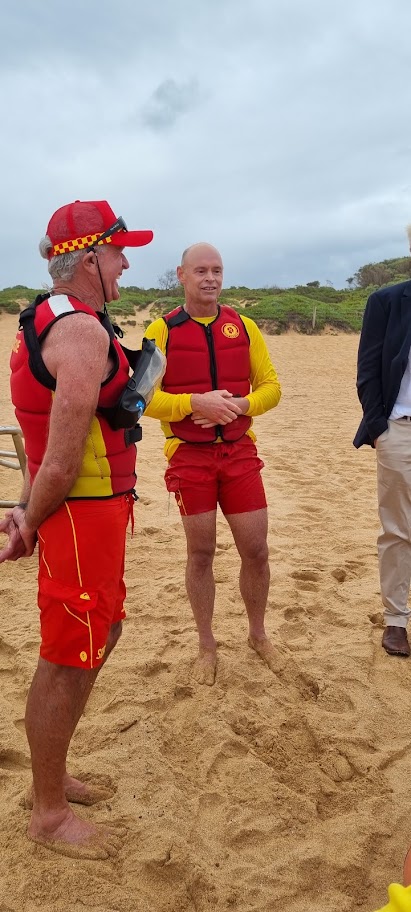
Al and Ash were congratulated by experienced IRB Drivers watching from the beach.
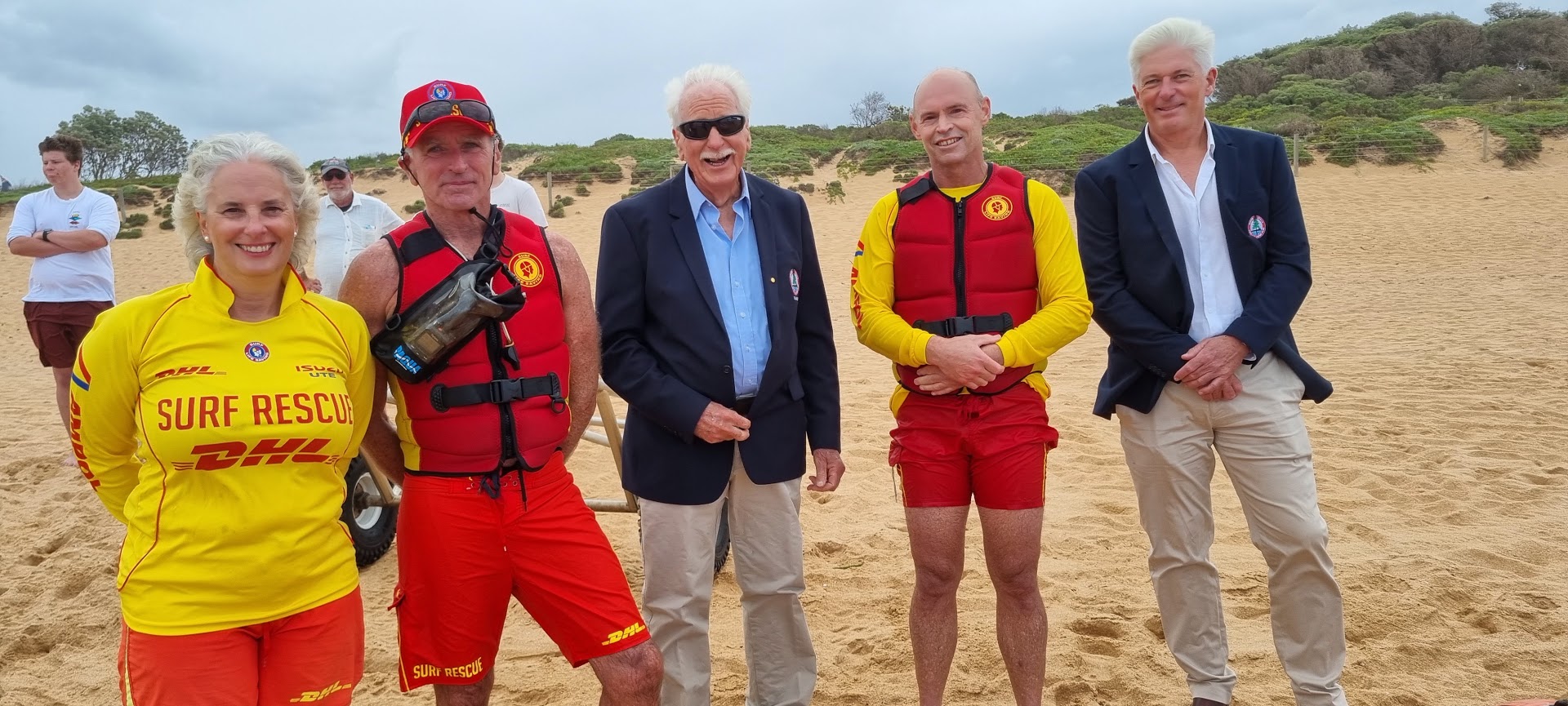
L to R Club President Bernie McKay with just a few of the Club's IRB Drivers past and present Nick Wood, Roger Sayers OAM, Ash Brown, Richard Cole Deputy President
When the IRB finally reached a safe place to stop beyond the waves, it was so far out it could not be seen people standing on the beach.
Those watching from the balcony had a clearer view of the boat and watched as two sea eagles flew over the IRB when it stopped, then flew off to North Avalon Headland, and after the IRB left to return to shore, flew back and circled over the spot where the boat had been, in a fitting finale to proceedings.
Thanks to all those Life Members and club members who could make it.
Roger Sayers OAM
Life Member, Avalon Beach SLSC
1956 Surf Carnival At Avalon Beach Recollections Of Reg Wood - Held On Sunday, 18th Of November.
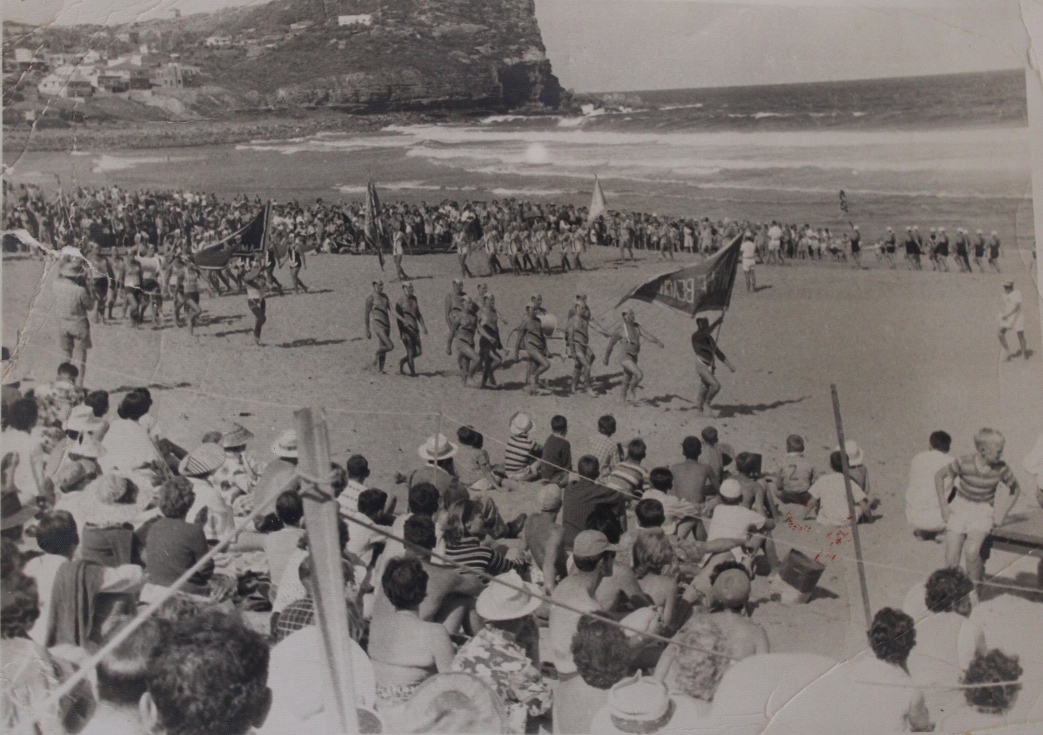
Malibu Surfers 1956
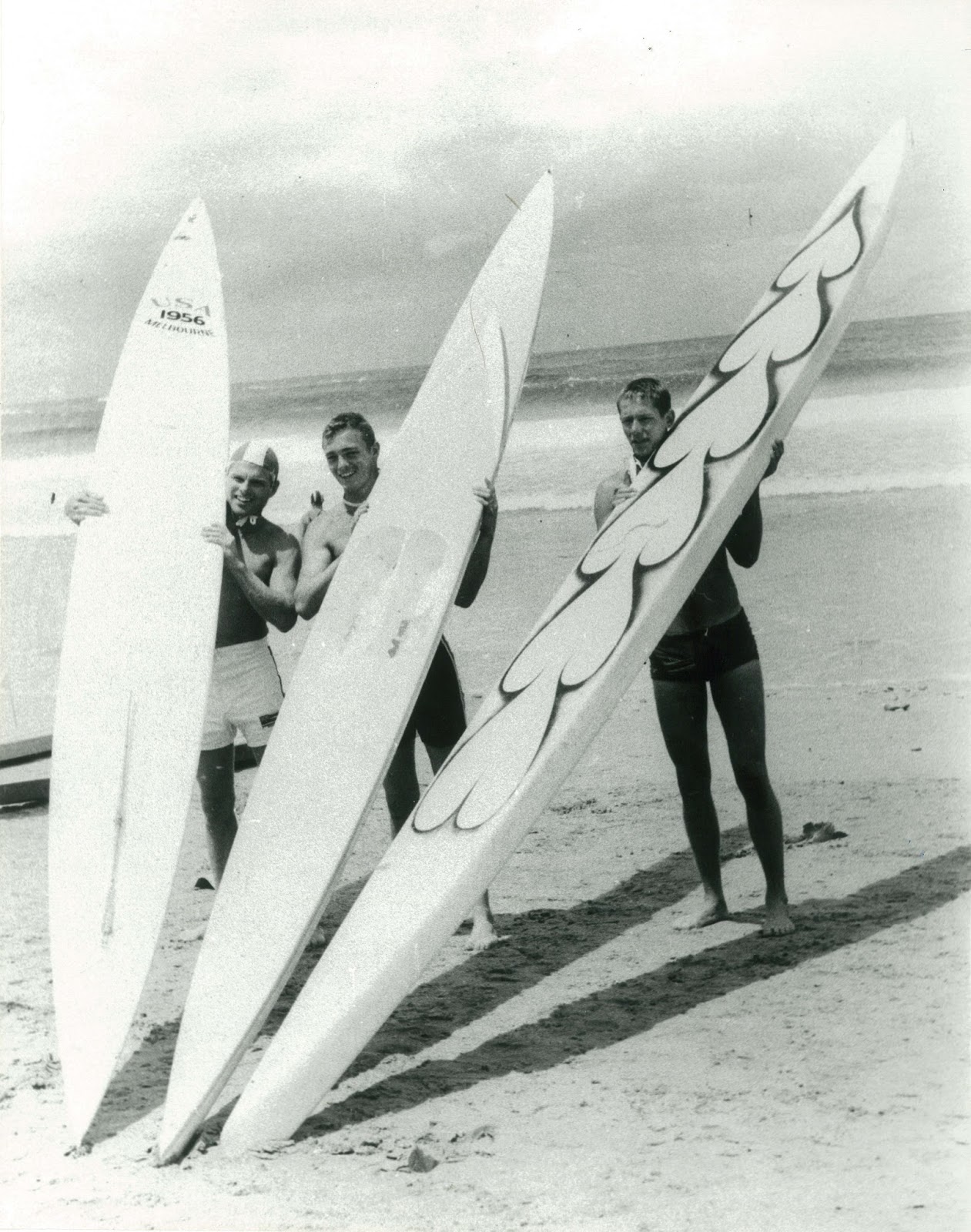
Reginald Charles Wood (Reg)
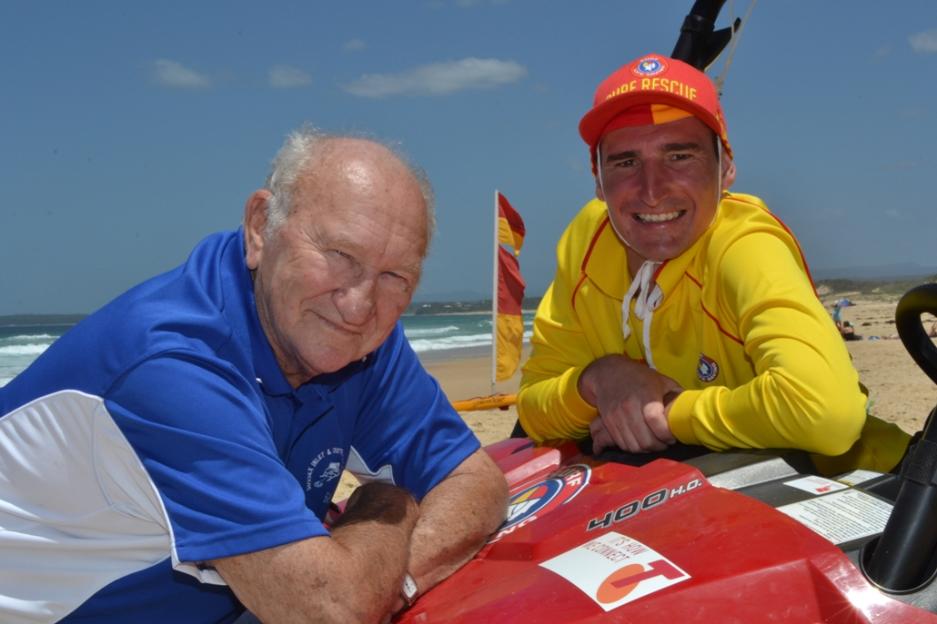
Outside of Surf Life Saving Mr. Woods had a keen interest in wrestling, was Featherweight winner of the Police Boys Club Federation in 1944, was Woolloomooloo – Lady Braddin Featherweight Champion and from 1963, for the next ten years, trained wrestlers at Leichardt Police Boys Club, even helping John Kinsella to the 1968 Mexico Olympics during his tenure there.
Reg gained his Bronze Medallion in 1944 when 18 years old. He was Avalon Beach SLSC Club Captain when what is still referred to by some as the 1st International Carnival on the Northern Beaches, with American and Hawaiian competitors who brought the ‘short surf board’ with them and then put on a display after the carnival. ‘The Arrival of the Mal’ was reported in Sydney newspapers as ‘The first public, and most significant, demonstration of the performance and capabilities of the Malibu boards was on Sunday 18th November at Avalon Beach, on the Northern beaches peninsula.’
Reg held Seniors Vice President, Board Captain Beach Inspector, Competitor, was a SLSA Delegate, Judiciary Committee positions and was awarded Life Membership of Avalon Surf Life Saving Club in 1964/1965, and 25 Years Long Service Aawrd (21.10.1971)
As a competitor he was 1st at Bilgola in the Double Ski (1954/55) and 1st again at Bilgola (1956/57) as well as 1st at Double Ski at Newport that season as well, 1st in the Ski Race at Avalon Beach (1949/50) and 1st at Palm Beach in Ski (1951/52) 1st in the Marathon Race (1946/47)
In 1989 he ‘retired’ to Sussex Inlet. There he joined the Sussex Inlet SLSC as an Active Reserve. Super-active would be more accurate as from then until January 2014 Reg trained members in all facets of Surf Life Saving as well as undertaking duties as a Resuscitation Assessor, Bronze Assessor, District Supervisor – the list is seventy years long and Reg, a few years back now, had some 45 SLSA Awards – another record, surely.
It all began during 1944 though, when Australia was at war and our strong young men had been sent from their patrols on home beaches to beaches far less friendly and even younger men were called on to fill the voids.
You first came to Avalon from the Woolloomooloo club in 1944?
Yes, that’s correct. During the war there was only one life saver left at Avalon and the association got in touch with Leichardt and the Woolloomooloo Boy’s Clubs to see if they could get members to man the beach. Which they did. I was in attendance down there – I was in the wrestling class at Woolloomooloo, and about four other members of the class were members of the club.
So you knew Doug Crane?
Yes – Doug came later – he was a Naval Architect with the Navy.
How did you get there?
Well, it was difficult. I lived at Abbotsford, and we had to get the tram to Wynyard, then the tram from Wynyard to the Spit and then the bus to Avalon, with a couple of stops at Narrabeen. That was the original start. Later on they bought us an old Packard – you know, one of the old Packard’s with the dickie seat. They used to house it near the railway there. What would happen then is we’d all turn up and you’d get three big blokes in the front, they’d put the dickie seats down and put cushions in there with the kit bags and get four in there as well, and then they’d be four in the back seat, with one laying along. So that was the crowd that we used to get. That was alright for a while but if you missed out on that then you had to get the bus.
Did you stay there all weekend?
Sometimes. We would try to get down for the weekend. Most of the years we spent Christmas down there too; summer and winter we still went down there. It was quite a lifestyle as you can imagine – the only trouble was the eating down there because in those days there were very few shops. About half past five the shops would shut and you could shoot a gun down the street it was that quiet. There was nothing – there was Le’Clerc’s on one corner, McDonald’s on the opposite corner then A J Small used to have a little box seat where he used to deal Real Estate and then the other side was Parsonage the Butchers, then Wilco’s the fruit shop and Mrs. Thornton with her meat pies. She ran a cake shop – we used to love her meat pies, that’s what we lived on over the weekend – milk shakes and meat pies.
Later on we thought 'what are we going to do here?' – so we decided we’d try and cook our own food. So we got two primuses and a couple of medium dishes and everyone brought a tin of food of some sort. We bought a loaf of bread and half a pound of butter and potatoes. So we made the potatoes – boiled them, put butter into them, the rest of the butter we’d use for the bread, and then we got six people, six loaves of bread, and then we’d put all the tins in together – spaghetti, sausages – everything went into one big bowl. You’d sit down and eat this with your slices of bread. Thinking back now it was a shocker but in those days it was beautiful food, especially when you’re tired and hungry.
Were there many people still going to the beach then?
There was a chap called Ruskin Rowe, a big architect down there, and he had a lot of land down there – most people would know what has been named after him – Ruskin Rowe. He was a big chap, great big chap, we used to see him of a morning in white shorts, a white sailcloth hat with the side turned up, and he had a great big Cadillac – he used to go down to the milk shop at Wilco’s with this little tiny bloody milk can and get his milk. It looked so funny, this huge man getting out of his car with this little can getting his milk (laughs). He was a huge man, nice man, well spoken. At any rate, he used to go up there to his land, he had all this land there and during the war he had the Air Force Cadets in – he used to get up there with a big scythe and get them to use the scythe going all over the grounds.
The Air Force Cadets would be down at Avalon for the weekend and they would march down to the beach and then they’d all go into the water. They were pretty regimented - we’d watch them march down and go back again. We knew we’d have trouble when they came down to the beach though – would say to each other ‘here they are, watch ‘em,’ – you had to watch them like hawks because some of the young scrubs were from the country and they didn’t know how to swim.
Down on the beach they’d only be about fifty people I suppose – but enough to get into trouble, as you can probably imagine – it’s a funny beach, Avalon, there’s a few spots there where people can get into trouble.
AIR TRAINING CORPS CAMP AT AVALON OPENED. The R.A.A.F. Air Training Corps camp at Avalon was opened yesterday by Group-Captain W. H. Robertson, Commanding Officer for Australia of the A.T.C. The cadets receive preliminary training at the camp to prepare them for their entry into the Air Force at the age of 18. Left: Pilot-Officer Wadds', D.F.C., Group-Captain Ellis, and Group Captain Robertson with an A.T.C. corporal in the camp kitchen. Right: Rear-Admiral Muirhead-Gould speaking at the opening of the camp, which is the first of its type in Australia.AIR TRAINING CORPS CAMP AT AVALON OPENED. (1943, March 22). The Sydney Morning Herald (NSW : 1842 - 1954), p. 6. Retrieved from http://nla.gov.au/nla.news-article17841433
What were you using to rescue people?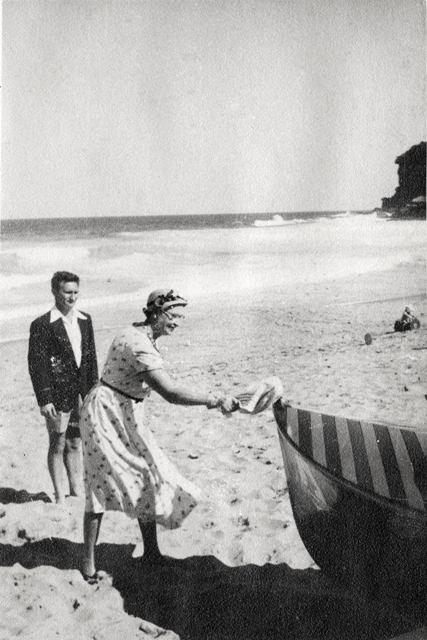 In those days we only had one surfboard – it was made out of half inch timber, so you can imagine how heavy it was. We never used it that much. Most of it was belt, line and reel. We had a surfboat – one was donated by a bloke called Geoff Groven – and we got another one from a Scotsman down there; he gave us one and he named it Ready-Aye-Ready – he did the presentation down in the local theatre.
In those days we only had one surfboard – it was made out of half inch timber, so you can imagine how heavy it was. We never used it that much. Most of it was belt, line and reel. We had a surfboat – one was donated by a bloke called Geoff Groven – and we got another one from a Scotsman down there; he gave us one and he named it Ready-Aye-Ready – he did the presentation down in the local theatre.
We were pretty public spirited down there – one of the chaps was Fred Andrews – he was in the Fire Brigade and often when he was down there he fought a few bushfires. Up where the Catholic Church is now, they had a bit of a fire up there and he called down to the boys on patrol and they went up there to help fight the bloody fire.
We ended up one night, Norman Cook, he was a decent bloke, a good bloke, one of the members of the club still now actually, he had something to do with the theatre – the school wanted to put a special night on, a fundraiser, and he got four or five people from the ballet came down – there was a Russian bloke there who had legs on him like tree stumps – geez he was a big man, anyway he conned another chap in the club called Ian Gorrie and I; we were doing judo at present in the Kano club down near the Glaciarium ( Sydney) and he said ‘we want you to do a display’ – at any rate, we had to do these damn throws on three blankets – that’s all we could use for a mat, we didn’t break anything but our arms later on….they were funny old days down there.
GLACIARIUM: POPULAR NIGHT ICE SKATING. Open Today 3 pm and 8 pm POPULAR NIGHT TO NIGHT Admission 1/3 (including tax) Skate Hire 1/4 ... B Season closes Jan 13 Sydney s favourite pastime in off duty hours Phone NiABOBl. GLACIARIUM ICE RINK RAILWAY SQUARE, SYDNEY. Advertising. (1945, January 1). The Sydney Morning Herald(NSW : 1842 - 1954), p. 5. Retrieved from http://nla.gov.au/nla.news-article17935885
So you kept going to Avalon after the war?
Oh yes. I was down there, in every billeting down there – I was club Captain, Vice Captain, Assistant Secretary, Board Captain, Social Secretary, Judiciary Committees – I was a delegate down there for about 30 years – Life Membership for 22 years for different bits and pieces, it was going very well.
Did you see the second clubhouse get built?
Oh yes. When I first started going there we’d be there for the weekend. We got there by bus, walked up to the clubhouse, this was about four o’clock in the afternoon, and it was the first time we’d been over since winter, just the start of the season, we opened up the padlocked door and walked in….you’ve got no idea how bad the air was – the rats had been busy taking over the place – we had cold showers there and there were holes in front of the cold showers where they’d chewed through. so we ended up going into the boatshed, which was at the end then, and we slept on the wooden floors in there. Later on, when you got used to the place, you’d sleep in the sand hills – they were quieter! (laughs).
We progressed, we went to hammocks at one stage; we put two big cables across the clubhouse and we’d hang hammocks on it and then we’d sleep in those.
I remember one chap who brought a collapsible bed down one weekend and made a nuisance of himself by arguing about everything. The boys waited till he was asleep, carefully picked him and his stretcher up and carried him down to the bus stop. He slept on, only to be awakened by the Catholics going to Mass at Mona Vale. True story! Sometimes the lessons were hard but we all learnt.
Did you know that Alan May of “Gold, Gold, Gold!” fame, with one of his mates, dropped into the Clubhouse after a few beers at the Newport Arms and challenged two of our members to a game of ‘500’. To make it worse they had challenged “Kegs”, a wharfie, and his mate. These two always played together and would use any means at hand to win. It was a thing of beauty to see them tick tack the value of their cards. Ala and his mate did not have a chance, they played until the last bus was due, no money, just for the fun of it. They came back several times after that, but with no success. Some people never learn.
Some people used to come on the last bus – which I think went to Palm Beach at 12 o’clock, if you were late and had gone to the dance at Newport, in the surf clubhouse there, you’d have to get that last bus or walk.
The dances in the clubhouse at Newport – they had a girl there with purple hair, they had everything there. That was the trouble – you’d get near the end of the dance and think ‘oh well, if you’re not lucky tonight, not walking a girl home, then you’d better hurry up and catch that last bus or you’ll be walking home.’
There’s nothing scarier then down the bottom of Bilgola – these sods used to leave a little bit earlier then you and hide down the bottom there in the bushes and it’s dark and all you can hear is the owl going ‘oowhhoo’ and out they’d jump! And off you’d go like a shot up the hill! Those beggars!
We also used to have dances at the old club at Avalon too. We’d borrow a piano from Mrs. Ward, who lived in the garage (where the present garage is), scrape a candle onto the floor to make it slippery. Naturally we’d have trouble getting the six chaps to carry it back in the morning before they went surfing.
Can you remember people camping behind the dunes?
That’s right! Chris Stilkens used to come down every year and put a big marquee up there. The Balmain Tennis Club – they’d come down, I think, twice a year. They were some of those that would have a yearly reunion down there.
The November 1956 Carnival, when you had the Americans out here….
That’s it! We worked like blazes for that – we got the Yanks and the Hawaiians out here for it. We used to meet down at the Chinese Restaurant in the Haymarket and we’d work over what we were going to do- going through everything, where are we going to meet, how are we going to get them in, where are we going to get the ambulances, when are we going to stop this bit – we went through everything.
Then when they did arrive it was a terrific day really – they brought their first little boards with them – you know the surfboards they start with now? ; some of those. Trouble was they couldn’t handle our surf and I think two of them ended up getting broken up out there on the seas. But it was good – there’s a photo around them somewhere with all these Yanks, all lined up – they enjoyed it.
We had a barbecue afterwards – I remember the sight next morning of one of the Hawaiian boys, had his surfboard under his arm, staggering a little bit, waiting for the bus to get on it and go back to Sydney.
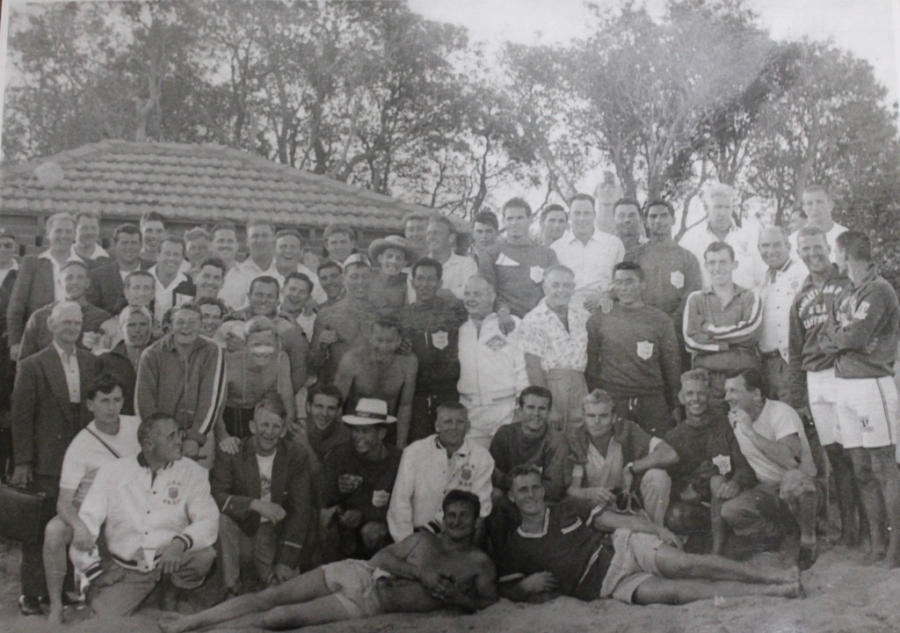
Reg Wood is the young fellow reclining in front, left side of the photo - according to Norma Watt, wife of the late Max Watt who’s the fellow reclining on the right side of the photo. Image courtesy Avalon Beach Historical Society.
The carnival that I always remember was one at Maroubra and they called it the ‘Roman Holiday’. When we got there the seas were Huuge! They were using, to set the boat buoys, they had to come from the beach on the other side- that’s how bad they were – the seas were huge. They wouldn’t let the juniors in, wouldn’t let the seniors in – they tried one seniors board race and I think some of the boys got out alright, so they said that’s it, we’ll have the seniors boat race – that was the only one they’d put on.
So we were all ready to go – said ;what are we going to do?’ and the sweep, Brown I think his name was, big chap, he said ‘well what are we going to do?’ – none of us were game to say ‘no, we don’t want to go out!’
So we got into the boat, the gun went off, we went into the water, got about fifty metres from the ground and a wave just rolled over the top of us, so we had to go back in, full of water – emptied it out, got back in the boat and started off again – got out a bit further and another huge wave came in, whack! – back we went to the shore-break, broke an oar on the way and thought – that’s it, we don’t have an oar, we don’t have to go again, and a chap from Bilgola said ‘here’s an oar – off you go!’ – so out we went again.
You don’t think you see – you think you’re made of steel you see – so away we went and we rowed and rowed and rowed and then the gun went off – you see they only gave you so much time you see and just as the gun went off one wave came in and went whasca! – I used to row bow and they reckon it’s the best photo they ever took of me because you can’t see me. It reminded people of the Old Spice ad – there was an Old Spice ad like that then - with this boat and the waves smashing into it –
But they used to have small carnivals too – like those at Warriewood and Mona Vale…they were the...
They were the 'Restricted' carnivals?; held just between the clubs from Narrabeen to Palm Beach, and also smaller ones with just the Northern Beaches Clubs - this was post WWII and a few early on prior to then too... those ones?
Yes, that’s it – the first ones, they were terrific carnivals – you just turned up on the day, no advertising, and they’d try to outdo each other with their hospitality and so on – they’d have cream buns and everything else laid on – which was alright at the end of the day but probably not a good idea at the start. Some of them used to put a beer on too – Palm Beach used to put a keg on – they were beautiful carnivals – you’d really tire yourself out. You went with a group of chaps who were about the same speed and capability as yourself – and you’d tire each other out. They were good though, very entertaining, you’d meet so many different people. You’d be paddling at some doctor or solicitor or judge, and we were all the same, all just members.
We were all the same on the sand and in the water – it doesn’t matter who you are, you’re governed by the same rules – I think that’s the main thing of it you know, you all abide by the same rules – if you knock someone out – he’s gone, doesn’t matter who he is.
You have trained a lot of youngsters during your time in SLS Reg?
Oh yes. When I was in Avalon I didn’t do many awards – I only got the Bronze medallion. When I came down to Sussex Inlet it was a very small club. I had that much knowledge from Avalon and so started to train the kids down here. I’ve got to 45 awards now – advanced Resuscitation. – De-fib, everything else needed.
I ended up joining the club and training the kids and members. Then I ended up down at the Branch as it’s no good going into the club unless you know what’s happening at the Branch. So I became an assessor with the Branch and at the start we used to cover from Warilla to Bateman’s Bay and then Bateman’s transferred to the Far South Coast. This was good for us because sometimes you’d have to do a Patrol Inspection – so you[d do half the beaches – going from Warilla to Shoalhaven Head and then the next week from Shoalhaven down to Bateman’s Bay – a long trip but it was good. I’ve enjoyed it all immensely.
What to you is the most important thing about bringing the next generation into the surf clubs?
I think you learn a lot about life. When you’re in a surf club you learn to read people – when you’re in a club you can see how people act when they’re doing something, so you learn to read people and what they’re like. And you get to know what you can do and what you can’t do. It’s not regimented – but you learn what to do and what not to do.
When I was younger everyone had to learn how to swim – to my way of thinking CPR should be added to that, everyone should learn CPR, it’s a must. I think it should be learned in every work place, in ever place people are.
I enjoyed working at the Branch, became Assessor of the Year one year down there, then Trainer of the Year and got Life Membership with the Branch. So I went for it, but I enjoyed working for it.
What was the best thing about being involved in the formative years of Avalon Beach SLSC?
The winter time was the best. We had a brick wall at the northern end of the beach and there would be big seas or small seas rolling in and you’d be at the side there, out of the wind and in the sun, and you could watch those waves rolling in over that headland – it was beautiful, relaxing - you’d be half asleep – ‘will we go for a wave?’ – ‘no’, and then you might be tempted to get your ski out and have a paddle and when you’d get a decent wave coking in everyone would say ‘no, never saw you, do it again.’ (laughs) – so you’d go out the back again, try and get one wave, get a big one and get back into the beach and there wouldn’t have been a sod looking (laughs).
What’s your favourite place in Pittwater?
We didn’t get around Pittwater much then – Robinson’s used to have a trawler and we used to go outside fishing. Sometimes the boy’s dad would come up – old Mr Unicombe came once, old man Mitchell – they all used to come out fishing with us. We were a little bit of mongrels then – we’d take some roast chicken out with us and make them sick and then offer them some roast chicken! (laughs)
They were god times.
What is your ‘motto for life’ or a favourite phrase you try to live by?
I guess mine would be ‘if there’s something to do, do it’. ..don’t wait for somebody else to do it… I think that would be about it lass.
Reg Wood In 1944
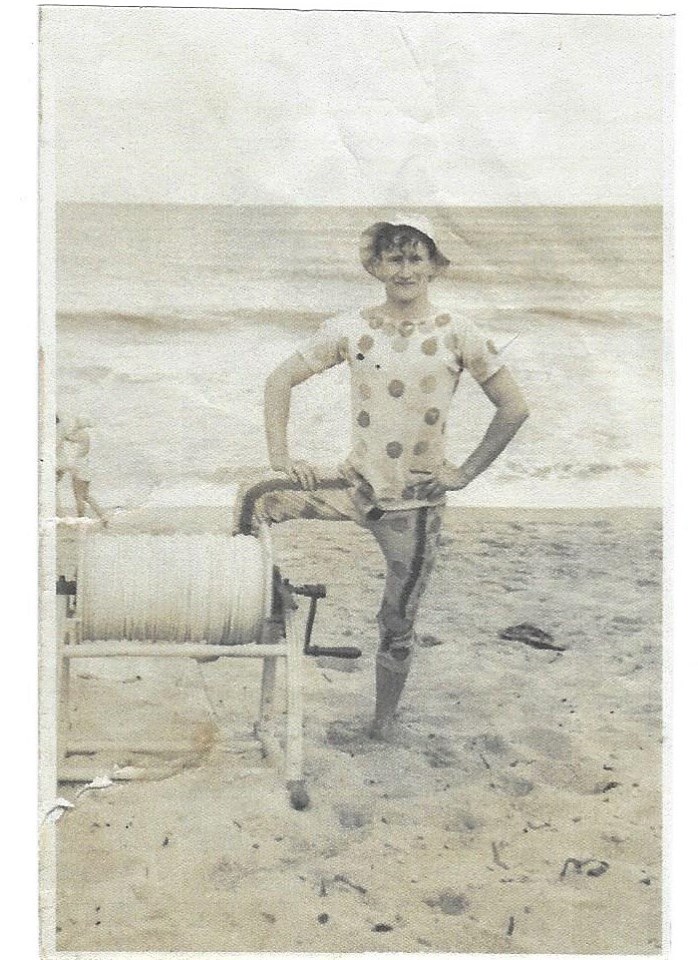
Don and Beryl Imison
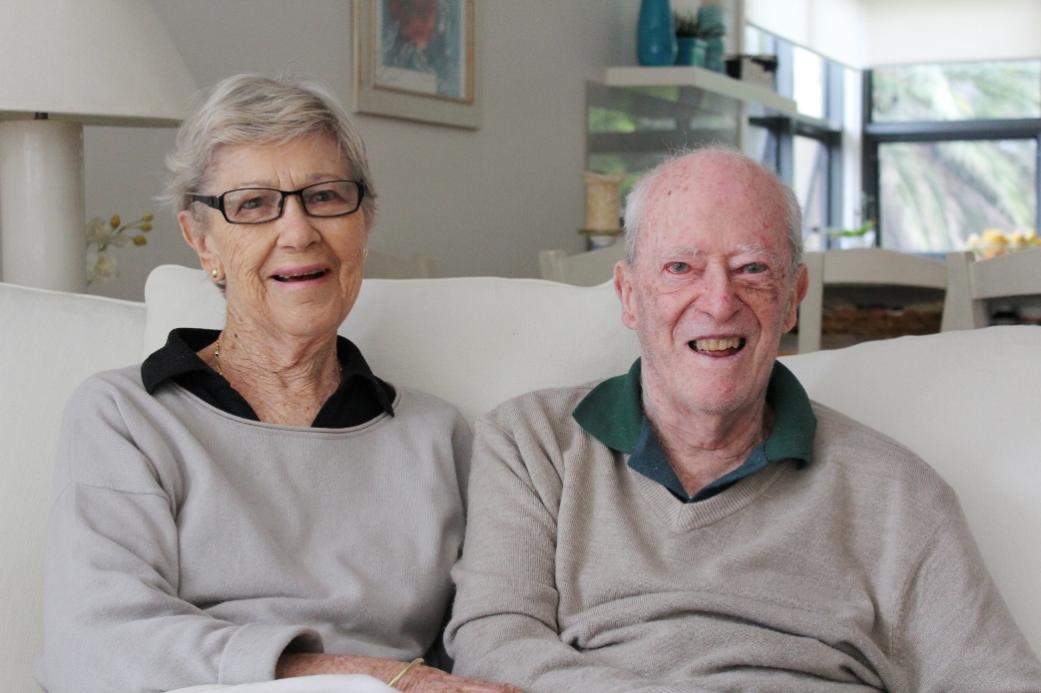
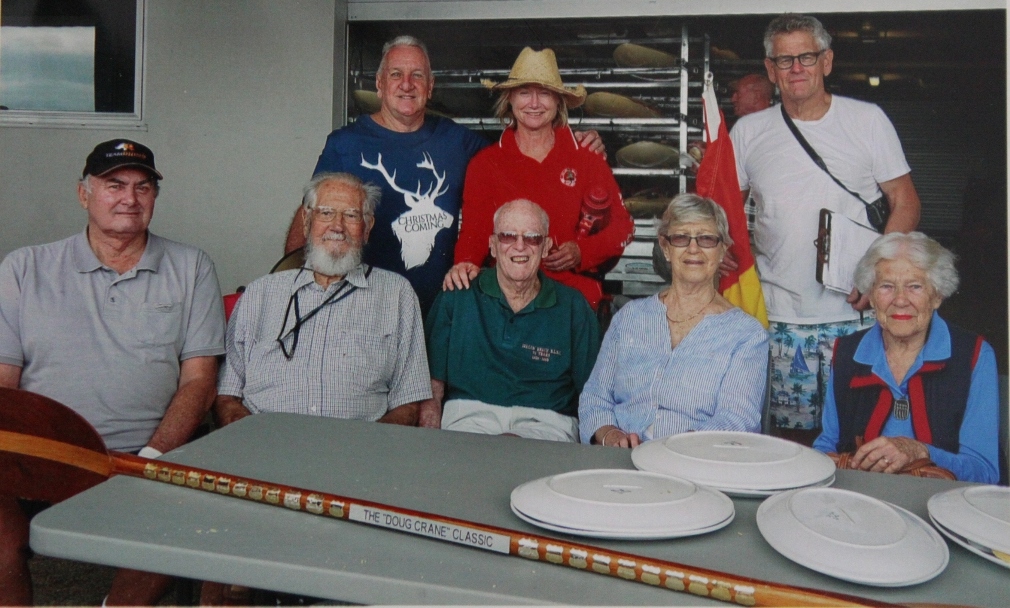

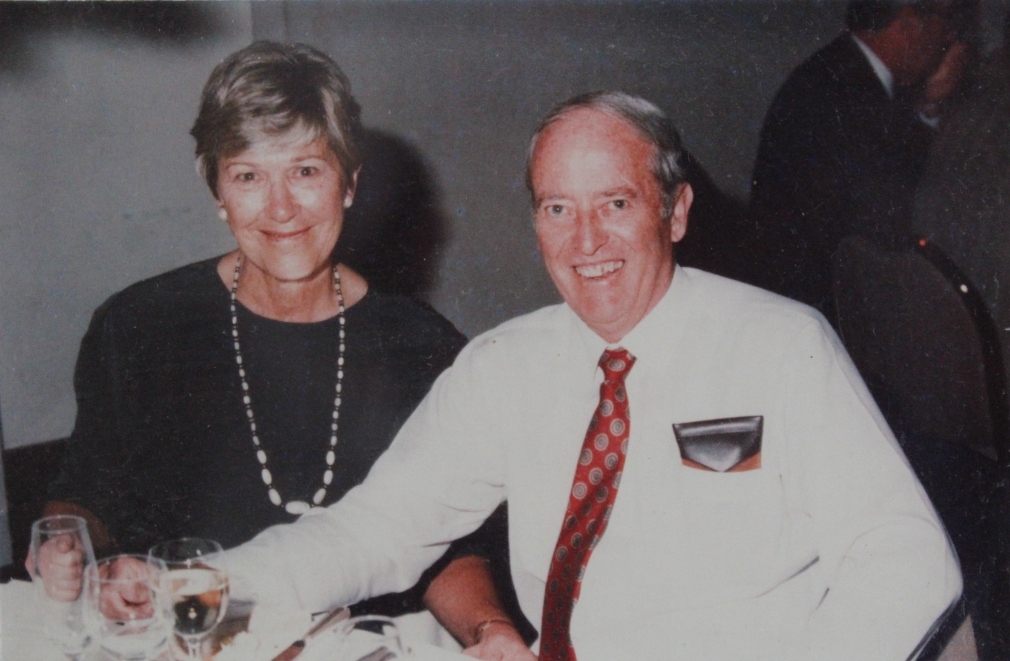
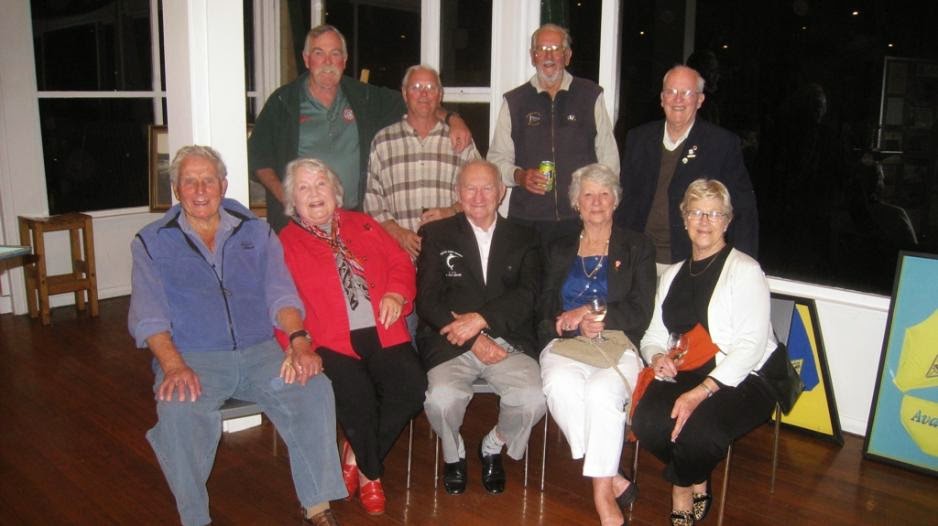
Some Notes
